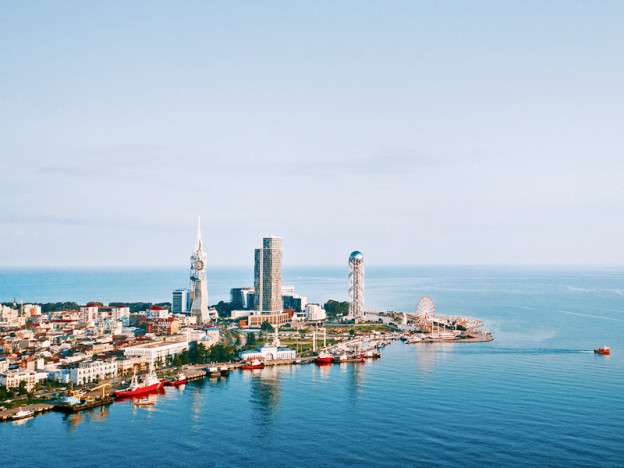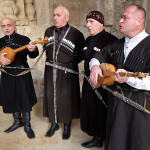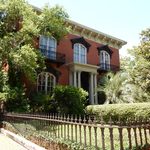Rupert Parker ends his trip to Georgia at Batumi on the shores of the Black Sea.
Georgia’s second-largest city has reinvented itself in the last few years as Vegas on the Black Sea, complete with casinos and crazy skyscrapers. The railway arrived here in the 19th century, connecting it to Baku in Azerbaijan so that oil could be shipped from here to the rest of the world. Later it grew into a fashionable resort, with the Russian Czar paying a visit, and the old town still has many of the distinguished buildings that accommodated and entertained the aristocratic guests.
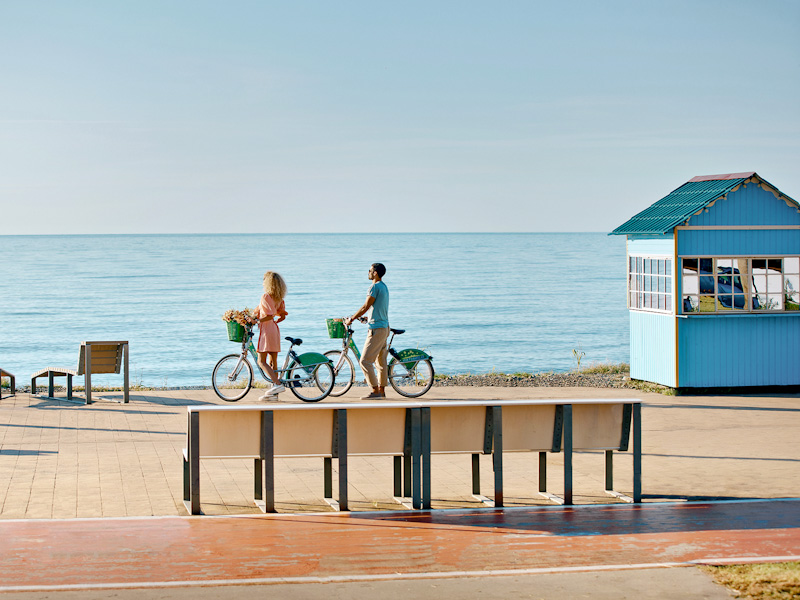
These days, the balmy climate and extensive beaches attract tourists from nearby Turkey, Israel and the Middle East. A whole new town is being built to cater for their every need and brightly coloured neon signs illuminate the sky at night. It’s also a good place to try traditional Ajarian cuisine which makes good use of walnuts and dairy products. And Georgian wine is always excellent and remarkably good value.
Originally laid out in 1881, the Boulevard on the seafront now stretches for 7 km, but there are plans to extend it another 13km all the way to the Turkish border. It begins at Miracle Park, on the headland next to the harbour. Highlights here include the Ferris wheel, a lighthouse built in 1882, and the Alphabetic Tower – a futuristic 130m-high double helix displaying all the letters of the Georgian alphabet in neon.
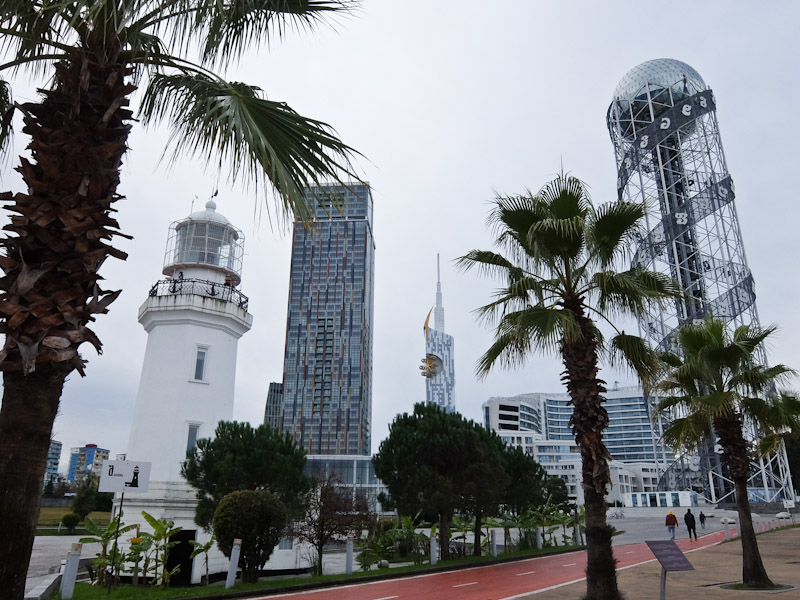
Starting from the huge statue of Ali and Nino, famous characters from an Azerbaijani novel, most of Batumi comes out for an early evening stroll. The tree-lined boulevard continues south past newly built skyscrapers and an assortment of fountains, café and beach bars, all perfectly pleasant. Of course, it’s the perfect place to watch the sun go down over the Black Sea and relish the bright lights of the modern city.
The old town was mainly built during the oil boom years, over a century ago. It’s packed with neo-classical mansions, their wrought-iron balconies covered with trailing vines. It’s an attractive area, not unlike the French quarter of New Orleans, and fun to explore on foot. It’s home to the oldest church in Batumi, built in 1865 and dedicated to St Nikoloz. Originally Greek Orthodox it’s now been recently restored to Georgian Orthodox.
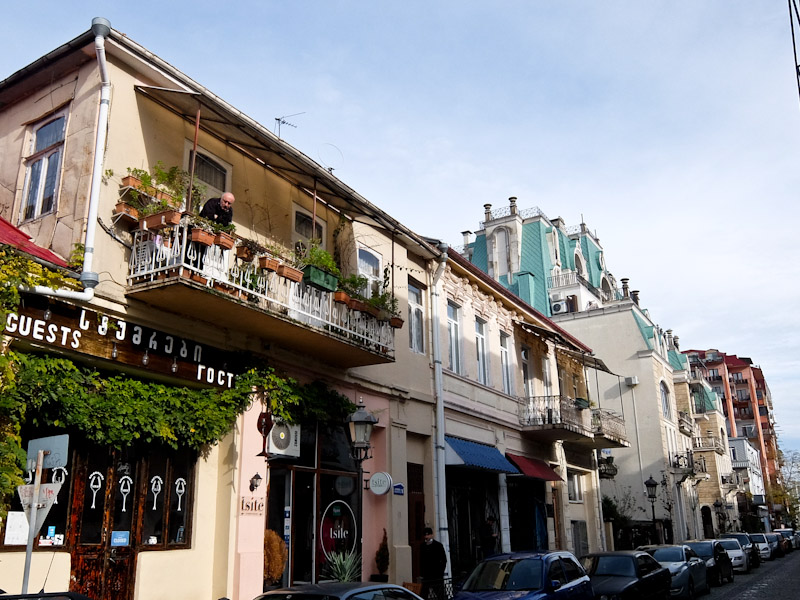
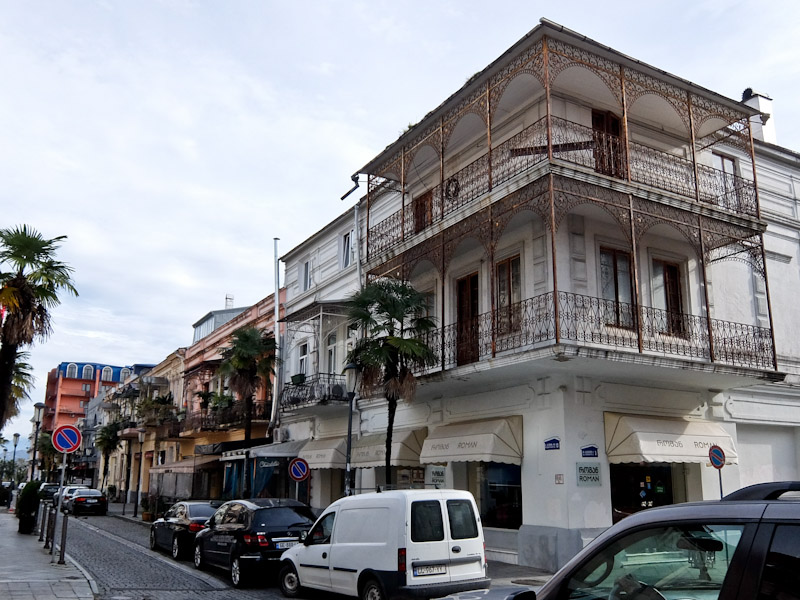
The new is not far away though. Opposite is the Piazza, a 2009 development in pastiche Venetian style, home to cafes, bars and restaurants. Nearby is Europe Square, with the old post office turned into a luxury hotel, and an enormously tall plinth topped with a statue of Medea holding a glistening Golden Fleece in her hands. It’s worth taking the Doppeymayr cable car, a ten-minute ride to the hilltop above the city, to admire the view.
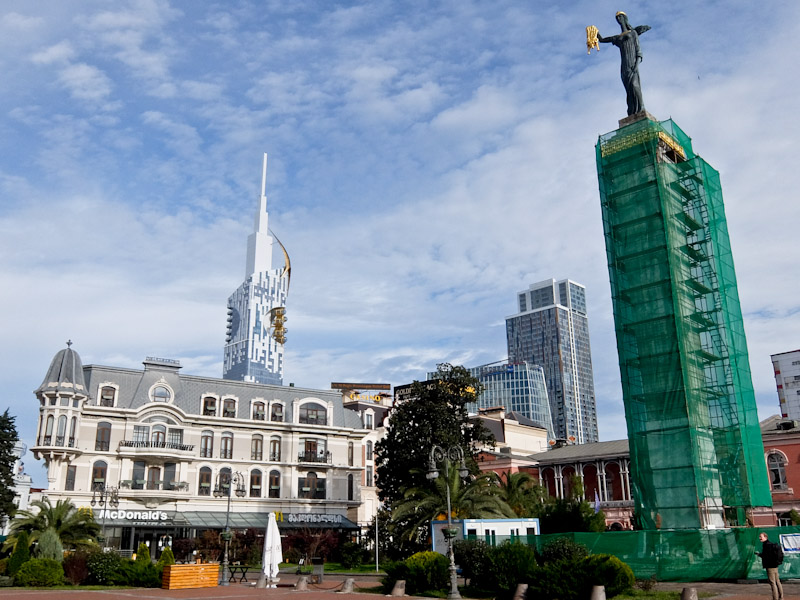
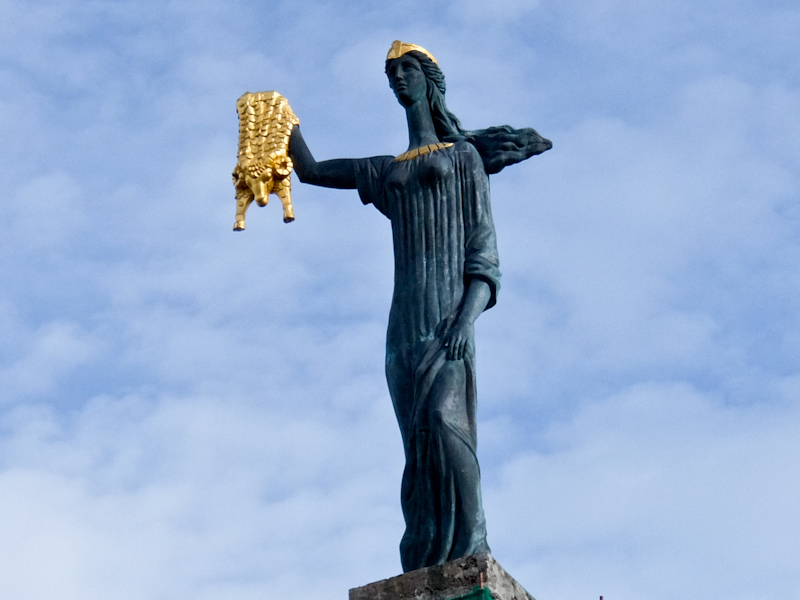
Opened in 2007, the Nobel Brothers Batumi Technological Museum details the 19th-century adventures of the Nobels and the Rothchilds as they created an international oil business. Ironically Robert Nobel was looking for sources of timber for rifle barrels when he stumbled across oil in Azerbaijan in 1876. Later the Rothchilds built a canning factory for kerosene in Batumi so it could be safely shipped across the world. At the same time, a Chinese merchant established tea plantations in Ajara which are still productive today.
To the north of the town, are vast botanical gardens, founded in 1912, straddling the hillside by the sea. More than 5000 plant species grow here, collected not just from the region but also from other subtropical climates including Japan and the Himalayas. A herbarium contains a further 40,000 species and there’s an extensive rose garden with 1,200 varieties. It’s a marvellous place to wander around and there’s the added bonus of diverse birdlife flying among the giant Eucalyptus’s.
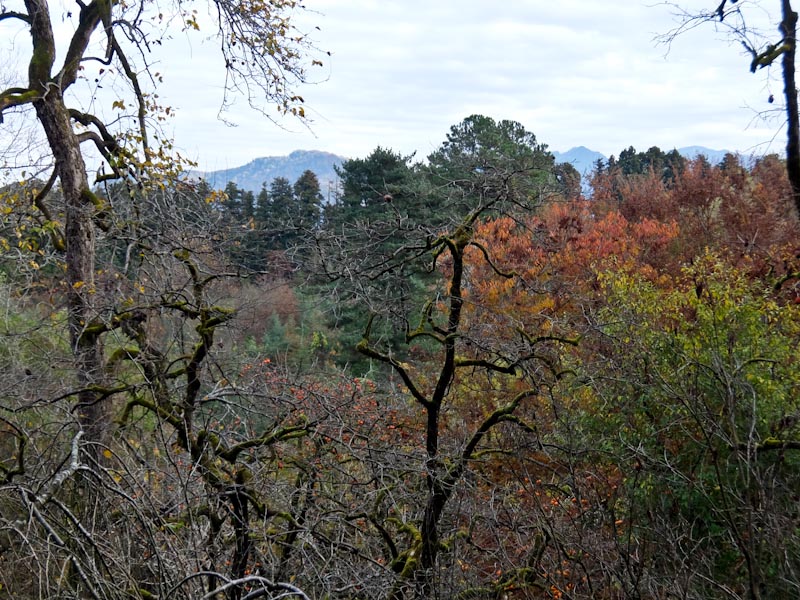
15km to the south, towards Turkey, is the Gonio-Apsarus Fortress, founded by the Romans in the 1st century AD. The massive Byzantine walls, topped with 18 towers, enclose an area of around 47,000 square metres, now filled with fruit trees and palms. Excavations have unearthed remains of Roman baths and barracks and a large cross marks the grave of St Matthias, a minor apostle, who died in Georgia in AD 80. There’s also a small museum with finds from the site.
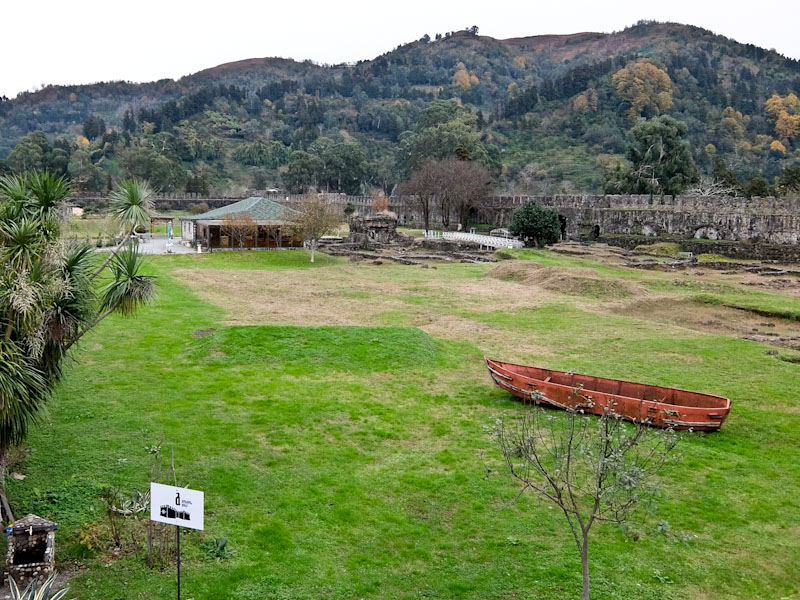
Batumi marks the end of my ten-day trip to Georgia and I’m able to fly out from its international airport. The city is certainly one face of the new Georgia, firmly committed to tourism and new attractions, yet still preserving its architectural heritage. It’s perfectly safe to wander around day and night and you eat well here. Before I leave, I’m taught how to make Khachapuri, the traditional cheese pies which are served everywhere. Now I’ll be able to rustle them up when I get home.
You can read about Rupert’s travels from Tbilisi to Batumi here.
Tell Me More About Visiting Batumi
FLY: Turkish Airlines flies from London Heathrow to Batumi, via Istanbul.
INFO: Georgia has information about the country.
Go Batumi has information about city and the region.
The Bradt Guide to Georgia is indispensable.
STAY: Hotel Radisson Blu Batumi has sea views and an excellent Asian restaurant.
EAT: Terrassa Askaneli is good for Khachapuri, traditional cheese pies.
Bern Restaurant has traditional Ajari Cuisine.
The Ajarian Wine House is outside the town and has live music.
Château Kvirike nestles among its own vineyards.

